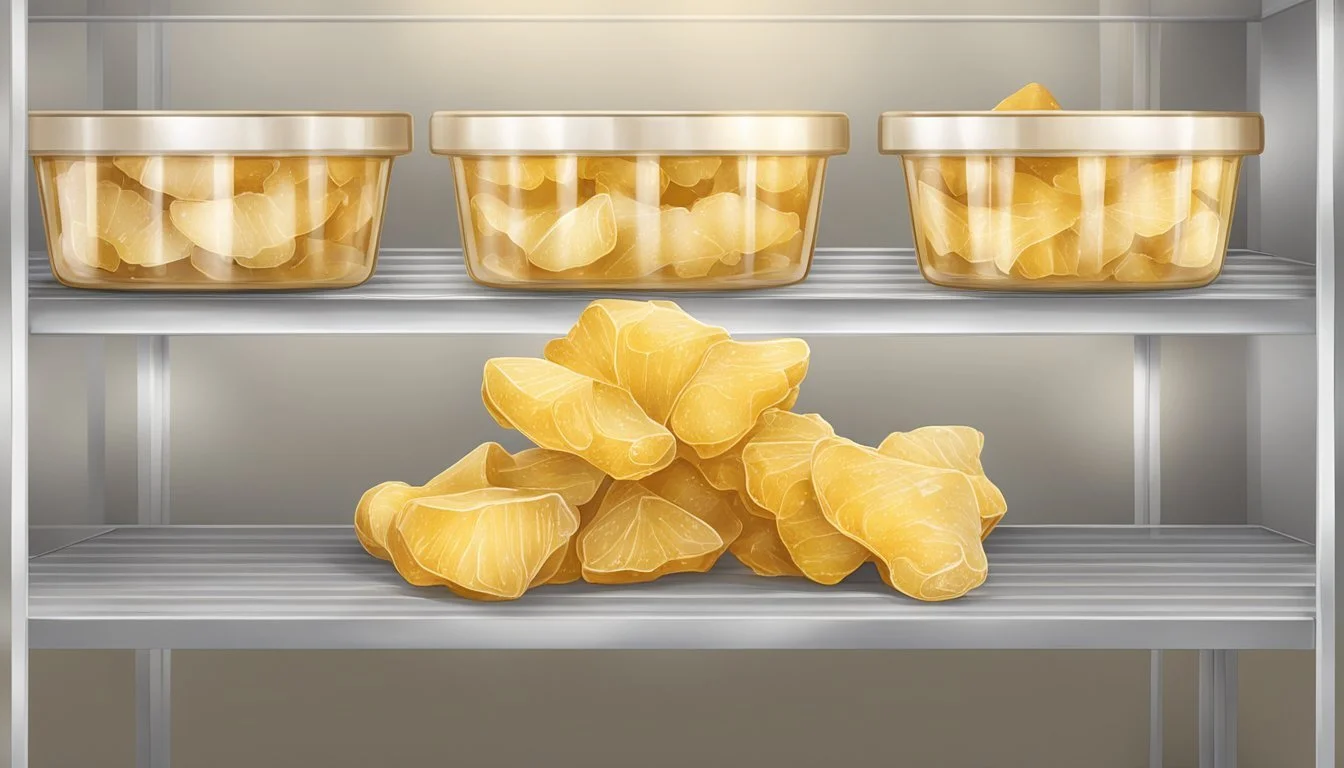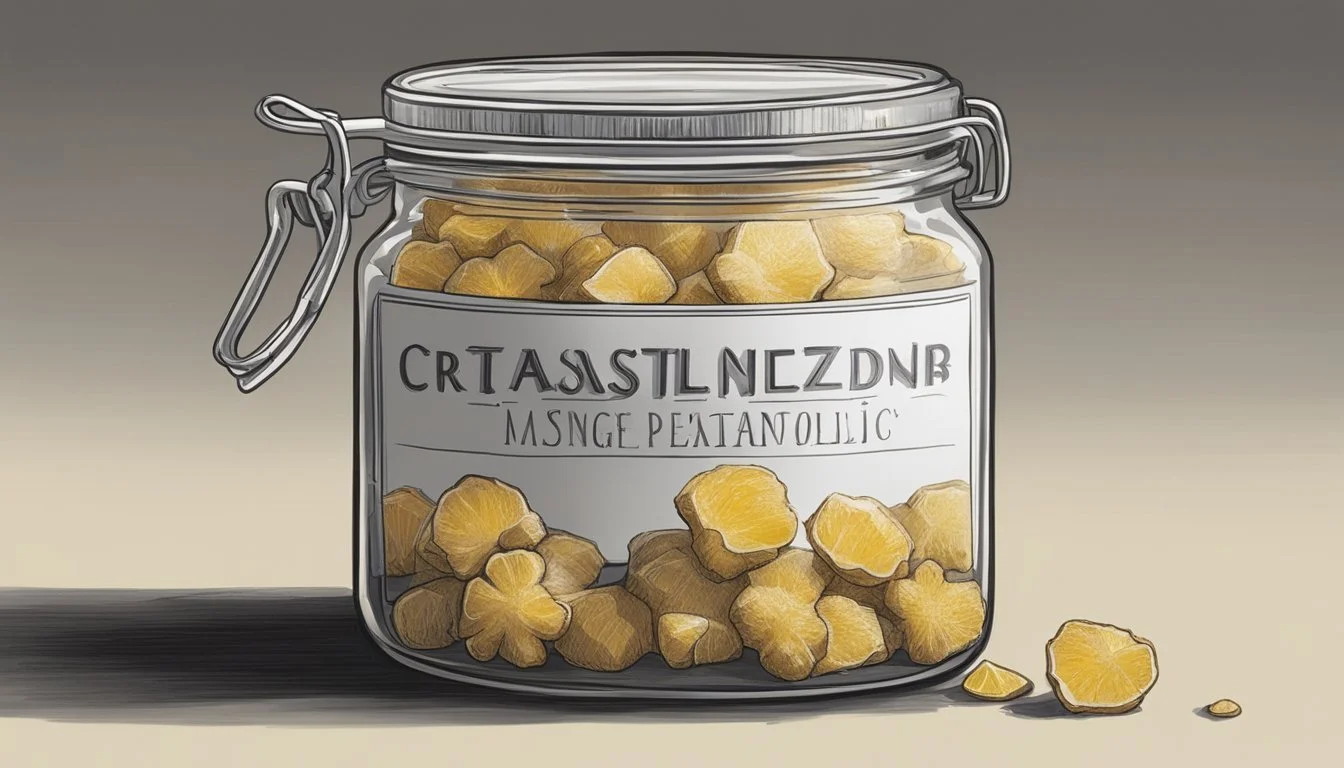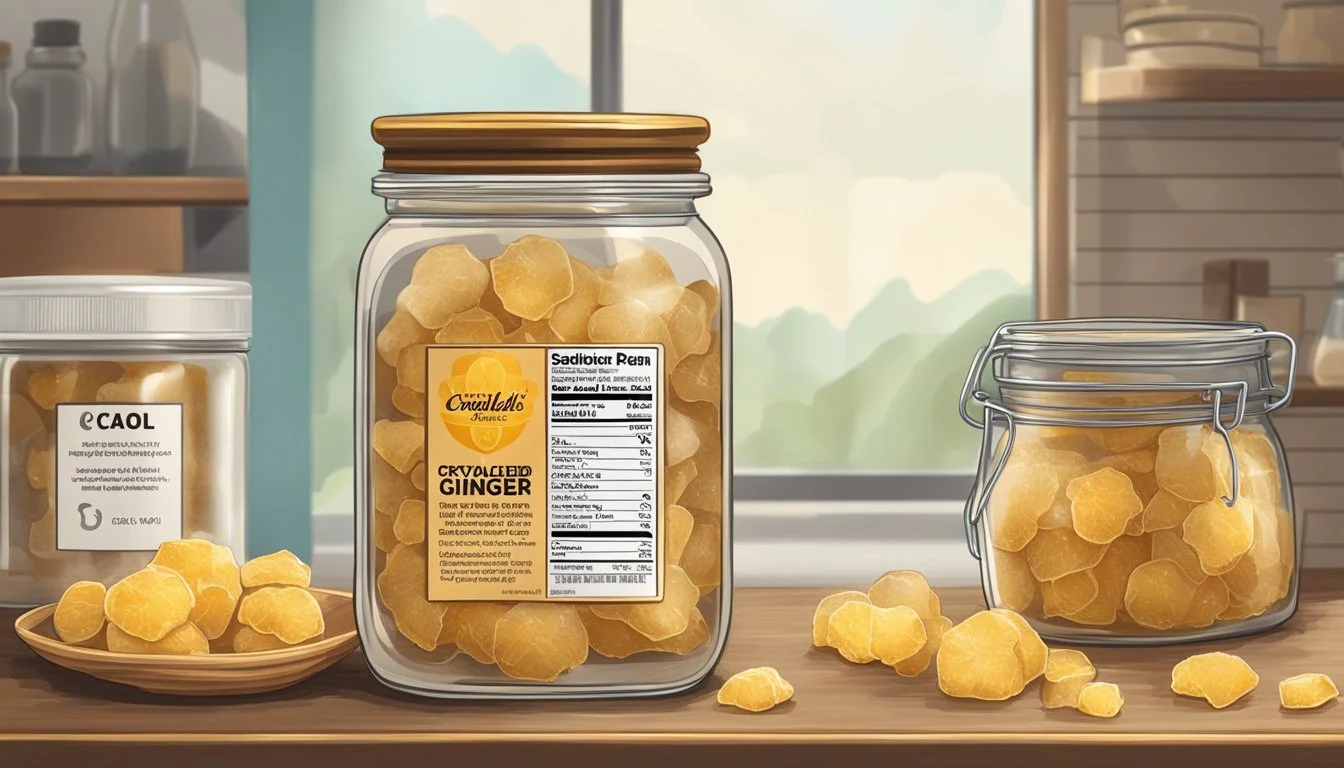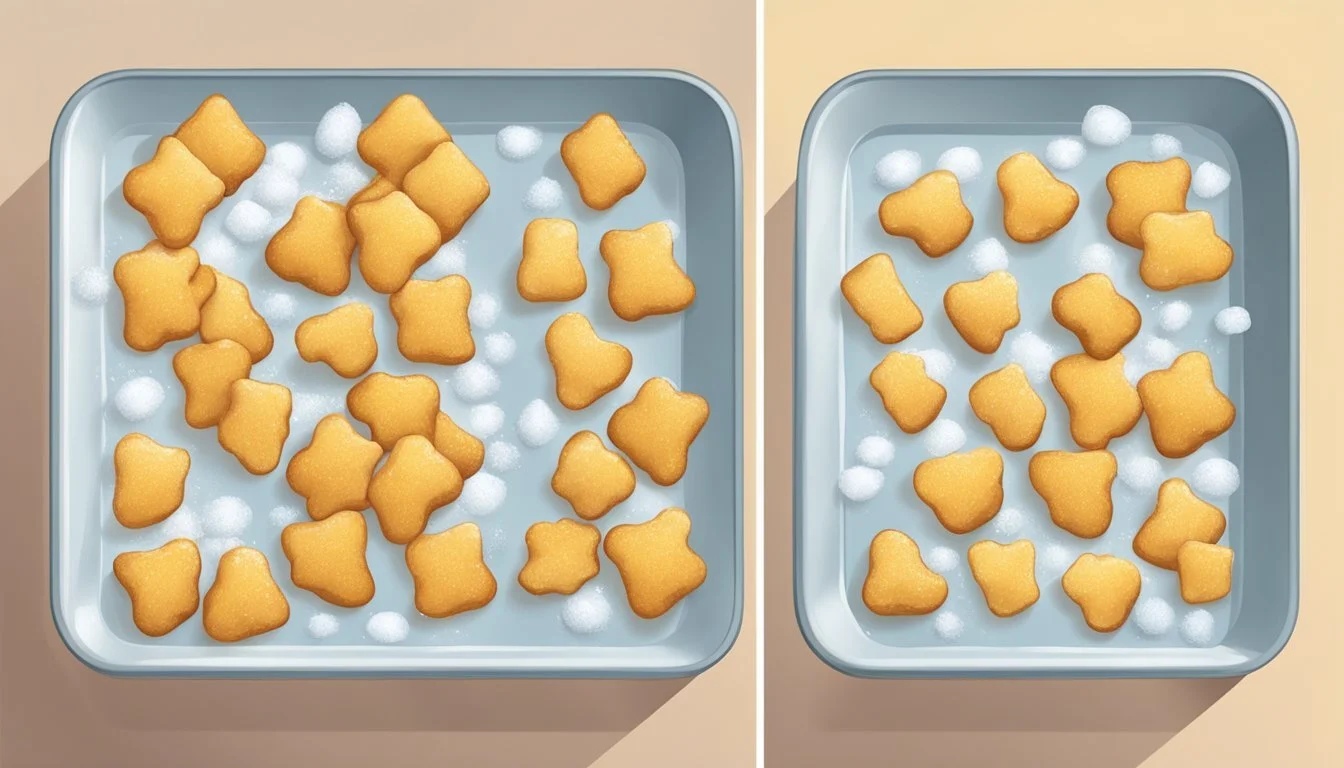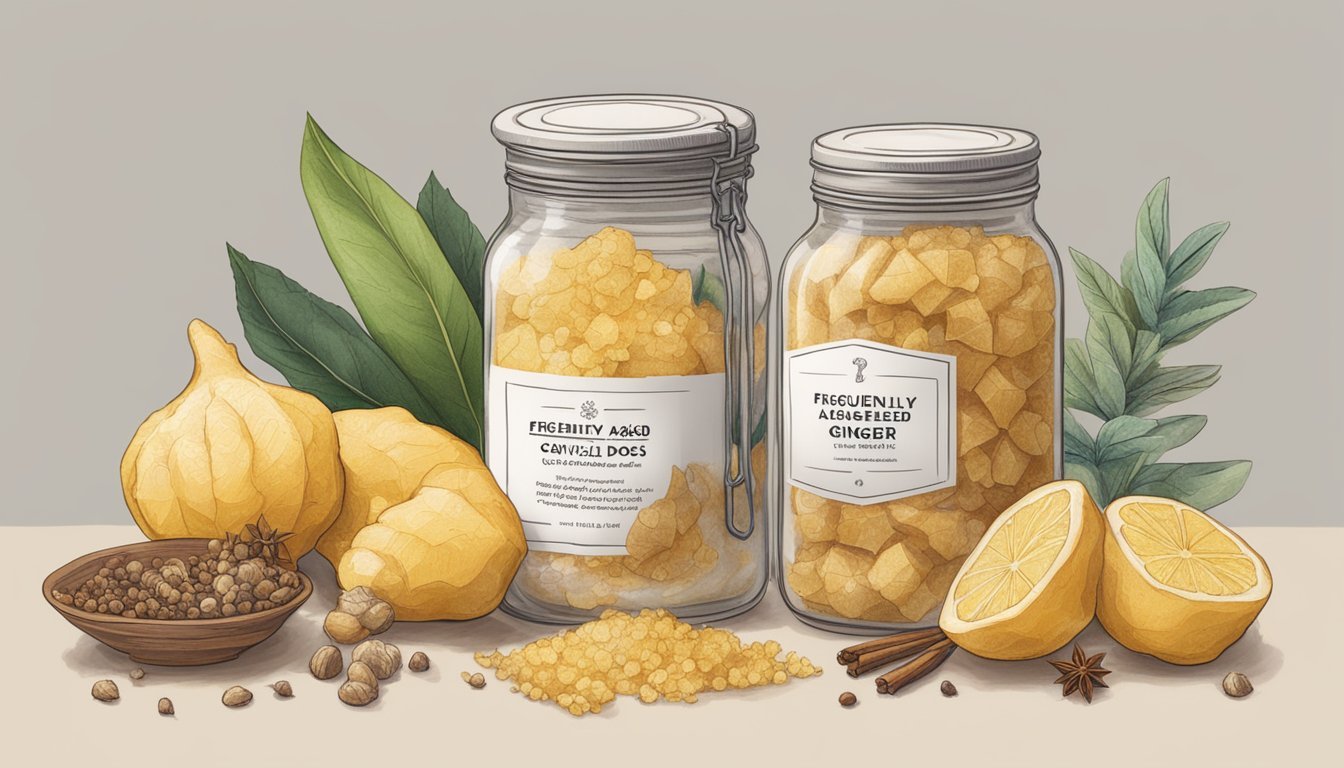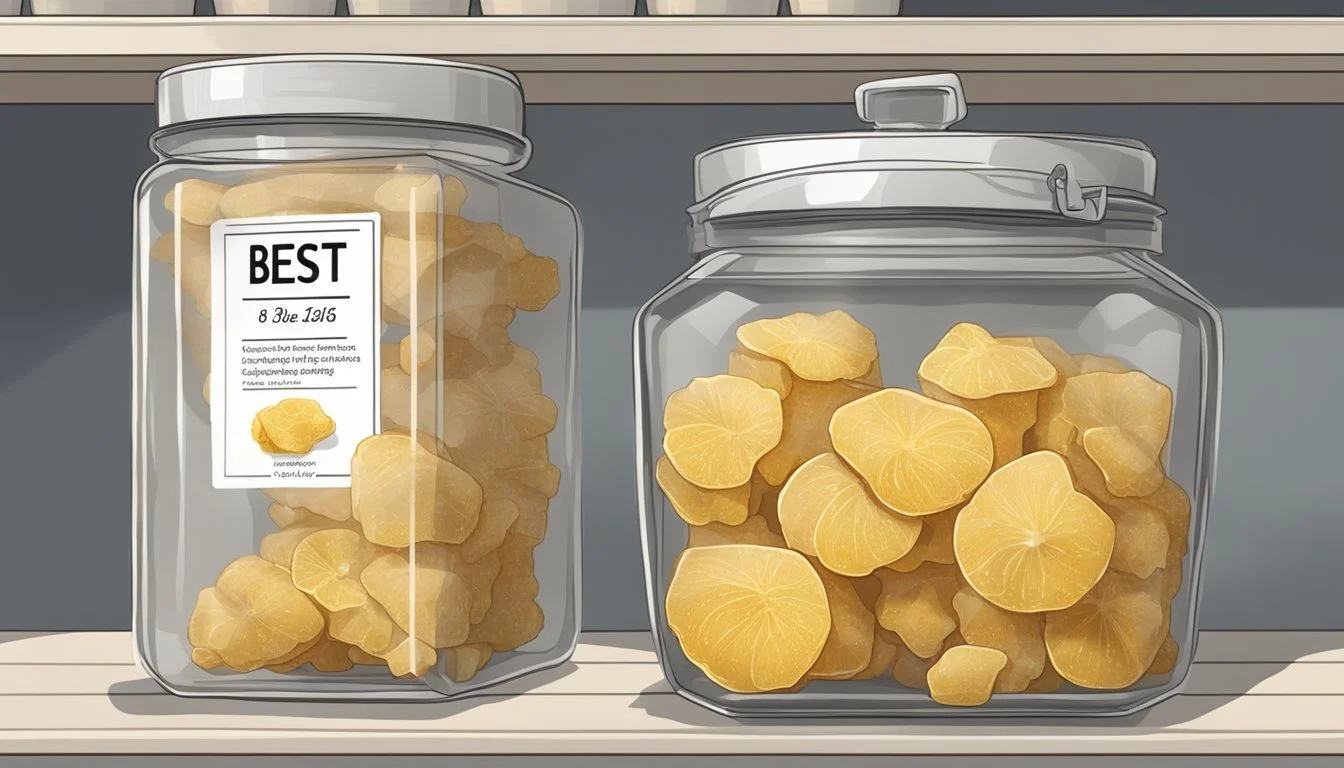How Long Does Crystallized Ginger Last?
Shelf Life and Storage Tips
Crystallized ginger (how long does crystallized ginger last?), a popular form of preserved ginger, is known for its sweet, spicy taste and numerous health benefits. It is made by cooking ginger in sugar (how long does sugar last?) syrup and then rolling it in granulated sugar, which extends its shelf life significantly. Many people enjoy it as a snack, a flavoring agent in baking, or even as a remedy for stomach upset.
When it comes to longevity, crystallized ginger is quite durable due to the preserving effects of sugar. Proper storage of crystallized ginger in airtight containers in a cool, dark place can maintain its best quality for about 2 to 3 years. However, like many preserved foods, it remains safe to eat beyond this time frame, although the flavors may diminish.
If crystallized ginger has gone bad, there will typically be noticeable signs such as mold growth, an off smell, changes in texture, or discoloration. The aroma and flavor are key indicators of potency; once these are no longer prominent, the ginger will no longer contribute the desired zing to dishes, although it may still be consumable.
Understanding Crystallized Ginger
This section dives into the essence and advantages of crystallized ginger, a candied form of ginger root known for its distinctive flavor and health benefits.
What Is Crystallized Ginger?
Crystallized ginger, also known as candied ginger, is made from fresh ginger root. The process involves peeling and slicing the ginger, then simmering it in a sugar solution until it becomes tender. After soaking, it's coated with granulated sugar, giving it a sparkly, crystalline appearance. This preservation method not only extends the ginger's shelf life but also mellows its spicy bite into a sweet, warm flavor that is versatile in culinary use.
Health Benefits of Ginger
Ginger root, the origin of crystallized ginger, is celebrated for its potential health benefits. Traditionally, it has been used to aid digestion, reduce nausea, and help fight the flu and common cold. Ginger contains gingerol, a substance with powerful anti-inflammatory and antioxidant properties. While crystallized ginger retains some of these benefits, it should be noted that the added sugar content may reduce its overall health value compared to fresh ginger.
Proper Storage for Longevity
Maintaining the quality of crystallized ginger over time hinges on the storage environment and choice of container. Ensuring the conditions are optimal and the container is appropriate prevents degradation and extends this flavorful treat's shelf life.
Optimal Storage Conditions
Crystallized ginger thrives in a cool, dry place, away from direct sunlight and heat sources. Temperatures between 60°F to 70°F are ideal. Crystallized ginger stored at room temperature may last up to six months, while keeping it in the refrigerator can extend its longevity to about one year. A freezer can preserve crystallized ginger's quality even further, allowing it to remain potent for approximately two to three years.
Choosing the Right Container
An airtight container is crucial for preserving crystallized ginger's taste and preventing moisture intrusion, which can lead to spoilage. When selecting a container, one must ensure it has a tight-fitting lid to seal the contents properly. For refrigerated storage, the container must also be moisture-resistant to avoid condensation. If crystallized ginger is purchased in bulk, transferring it to a smaller container can help maintain its freshness and potency by reducing air exposure.
Maximizing Shelf Life
To ensure crystallized ginger retains its quality and flavor, certain storage conditions must be met. Sugar plays a protective role, while minimizing water and air exposure is crucial.
The Role of Sugar and Water
Sugar acts as a preservative for crystallized ginger, creating an environment less conducive to microbial growth by binding to water molecules. This relationship reduces the available water that bacteria and molds need to thrive. Thus, the higher sugar content in crystallized ginger contributes to its long shelf life, generally around 2 to 3 years when stored appropriately.
Extending Shelf Life Practices
Several practices can extend the shelf life of crystallized ginger:
Storage: Store crystallized ginger in a cool, dry place away from heat and light sources to prevent degradation.
Containers: Use airtight containers to protect it from moisture and other contaminants.
Heat and Light: Keep it away from heat sources and out of direct sunlight, as these can degrade its quality more rapidly.
Refrigeration: While not necessary, refrigeration in an airtight container can extend its usability beyond its typical room temperature shelf life.
Identifying Spoilage
When investigating crystallized ginger for spoilage, one should look for distinct indicators that signify whether the ginger is still of optimal quality for consumption or has gone bad.
Spoilage Signs and Tests
Color: The ginger's visual appearance is a reliable indicator. Crystallized ginger typically has a consistently golden to light brown hue. Any discolorations, such as dark spots, may suggest spoilage.
Texture: Fresh crystallized ginger should feel firm to the touch and slightly chewy. If it exhibits a hardened or extremely dry texture, this is a sign it may have exceeded its shelf life.
Flavor: Properly preserved crystallized ginger retains its characteristic spicy-sweet flavor. A taste test (if safe) can reveal off flavors that are an indication of spoilage.
Smell: One can sniff crystallized ginger for any off or unusual odors. Spoiled ginger may emit a sour or unpleasant smell distinct from its naturally pungent aroma.
Effects of Spoilage on Quality
Safety: Consuming spoiled crystallized ginger could potentially lead to food-borne illnesses. Thus, it's critical to recognize the signs of spoilage outlined above.
Culinary Impact: Spoilage greatly impacts the ginger's culinary contribution, as altered flavor and texture diminish its desired effect in recipes.
Usage and Incorporation in Recipes
Crystallized ginger, with its sweet and spicy profile, elevates both sweet and savory dishes, providing an exciting twist to traditional recipes.
Creative Ways to Use Crystallized Ginger
Cooking: Chefs might incorporate diced crystallized ginger into savory dishes to introduce a unique blend of sweetness and heat. It acts as a perfect counterbalance to the richness of meats and can be used as a garnish to add texture.
Tea: Slices of crystallized ginger are often steeped in hot water for a comforting tea. This not only imparts a robust flavor but also leverages the digestive benefits of ginger.
Baking: Pastry chefs use crystallized ginger to add a spicy-sweet kick to baked goods. It can be found in:
Cookies: Chopped ginger enhances the flavor.
Cake: Ginger pieces can be mixed into batter or used as decoration.
Candied Ginger: Its versatility goes beyond being a simple snack. It's a vital baking ingredient, especially during the holiday season, adding a piquant flavor to numerous desserts and confections.
Impacts on Baking and Cooking
Flavor Profile: Crystallized ginger imparts a distinctive flavor to various recipes, from ginger syrup-enriched glazes to aromatic cookies. Its intensity can transform a dish's character.
Texture and Color: When used in baking, such as in cakes or cookies, its chewy texture and bright appearance provide not just taste but also a pleasant visual and textural contrast.
Ginger Syrup: The syrup leftover from the crystallization process can be used to sweeten and flavor beverages or as a glaze in baking, adding a luscious sheen and depth of flavor.
Recipes: With its ability to complement other spices and ingredients, crystallized ginger can be an inspiring addition to one's culinary repertoire, challenging chefs to create innovative recipes.
Making Your Own Crystallized Ginger
Creating your own crystallized ginger requires simple ingredients and a straightforward cooking process. It provides a homemade treat that can be used in various recipes or enjoyed alone.
Step-by-Step Homemade Preparation
Ingredients:
Fresh ginger root
Granulated sugar
Water
Preparation:
First, one should wash the ginger root thoroughly.
Using a spoon or a vegetable peeler, peel the ginger.
The ginger then needs to be sliced thinly, which ensures even cooking. A mandolin can be used for consistency.
Cooking:
Place the sliced ginger in a large saucepan.
Add enough water to cover the sliced ginger and bring it to a boil.
Once boiling, reduce the heat and let it simmer. This usually takes around 30 minutes to soften the ginger.
The prep time involves peeling and slicing, while the cook time is primarily the boiling and simmering stage.
Sugar Coating:
Drain the ginger and reserve the water if desired (it can be sweetened to make tea).
Return the ginger to the pan, add sugar, and cook until the sugar dissolves and the ginger is well-coated.
During the final stages, the ginger transforms into "candied" as the sugar crystallizes around each slice.
Drying:
Spread the candied ginger on a greased cooling rack.
Allow it to dry, which could take several hours to overnight, depending on the humidity levels.
Storage of Homemade Varieties
Container: Store the homemade crystallized ginger in an airtight container to preserve its shelf life.
Location: Keep it in a cool, dry place, away from direct sunlight.
Duration: Properly stored, homemade crystallized ginger typically lasts for up to two months. Refrigerating it can extend its shelf life up to six months.
Tips: For optimal longevity, one should ensure the ginger is fully dried before storage to prevent moisture, which could lead to spoilage.
Frequently Asked Questions
How long does crystallized ginger last?
Unopened: Up to 2-3 years.
Opened (Room Temperature): Around 6 months in an airtight container.
Refrigerated: Up to 1 year in an airtight container.
Frozen: Up to 2 years.
Is crystallized ginger a natural remedy for nausea and upset stomachs? Yes, crystallized ginger contains compounds that may help relieve nausea and upset stomachs. Many people use it as a natural remedy.
What are the health benefits of ginger? Ginger is known for its anti-inflammatory properties and may aid in digestion, reduce nausea, and help fight the flu and common cold.
How should ginger be stored to retain its benefits? To maintain freshness and potency:
Store in tight-sealing containers.
Keep in a cool, dry place away from direct sunlight.
Can crystallized ginger be used in place of fresh ginger? While they both originate from the same root, their uses may differ due to distinct textures and flavors. Crystallized ginger is sweeter and used often as a snack or in baking.
What is ginger water? Ginger water is a drink made by boiling sliced fresh ginger in water. It is consumed for its potential health benefits.
Can you still use crystallized ginger after the expiration date? Crystallized ginger is often still safe to consume after its expiration date, but it's best to check for signs of spoilage such as an off smell or appearance.
Summary
Crystallized ginger, a sweet and spicy treat, is known for its long shelf life. Generally, crystallized ginger can retain quality for about 2 to 3 years when stored properly. It remains edible even after the expiration date on the package if there are no signs of spoilage.
Storage plays a crucial role in extending its shelf life. To maximize freshness, it should be stored in an airtight container and kept in a cool, dry place. Once the crystallized ginger is opened, consumers can typically expect it to last for around 6 months under these conditions.
Benefits of ginger, although not conclusive in crystallized form, might include aiding digestion and potential anti-inflammatory properties. These benefits add to the appeal of crystallized ginger as a pantry staple.
To summarize, the key points are:
Shelf Life: 2 to 3 years unopened
Post-Opening: About 6 months
Signs of Spoilage: Mold growth, texture changes, color darkening
Storage: Airtight containers, cool and dry place
Benefits: Digestive aid, potential anti-inflammatory effects
Consumers should regularly check their crystallized ginger for any indications of spoilage before use. Despite its lengthy shelf life, the product's quality is contingent on appropriate storage and condition checks.


